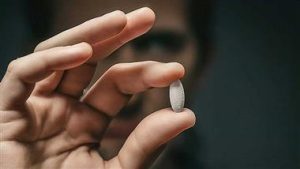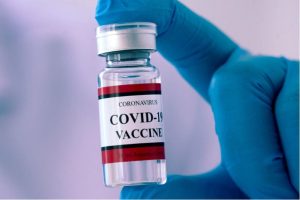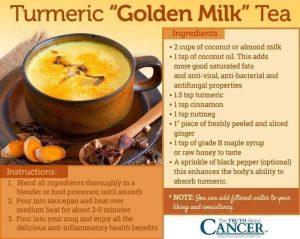Gross Misconduct — The Final Nail in the Coffin for Antidepressants
STORY AT-A-GLANCE
- The Sequenced Treatment Alternatives to Relieve Depression (STAR*D) study published in 2006 was the largest and longest-running antidepressant effectiveness trial ever conducted and, importantly, it used real-world patients
- The authors claimed an overall cumulative remission rate of 67%, and this study has since been used to prop up the idea that antidepressants work in the real world
- However, the widely-made claim that antidepressants work for nearly 7 out of 10 patients in real-world clinical settings is based on scientific misconduct and fraud
- In his reanalysis of the STAR*D study, psychologist Ed Pigott and colleagues showed that, had the study protocol been followed, the cumulative remission rate would only have been 35%. Moreover, the STAR*D report omitted the stay-well rate. Only 3% of the 4,041 patients who entered the trial and went into remission were still in remission at the end of their one-year follow-up
- Most clinical drug trials have found the effectiveness of antidepressants are on par with placebo, and many studies have debunked the serotonin theory that underpins the use of antidepressants. Meanwhile, large-scale meta-analyses show that physical exercise is the most effective remedy — about 1.5 times more effective than antidepressants — for depression
According to medical journalist Robert Whitaker, author of “Mad in America” and publisher of madinamerica.com, the widely-made claim that antidepressants work for nearly 7 out of 10 real-world patients is based on research misconduct and scientific fraud.
“If the major media picks up on this story, they will have the chance to report on what arguably is the worst — and most harmful — scandal in American medical history,” he wrote in a January 3, 2024, article.
The STAR*D Study
The study in question, the Sequenced Treatment Alternatives to Relieve Depression (STAR*D) study,2 was published in 2006. This was the largest and longest-running antidepressant effectiveness trial ever conducted and, importantly, it used real-world patients, who often cannot participate in industry trials due to exclusionary criteria.
In the end, the authors claimed an overall cumulative remission rate of 67% — far better than placebo — and this study has since been used to prop up the idea that antidepressants work in the real world, even though most clinical drug trials have found their effectiveness are on par with placebo,3 and despite the many studies debunking the serotonin theory that underpins the use of antidepressants in the first place.
As reported in a 2023 systematic umbrella review of the evidence for the serotonin theory of depression:4
“The main areas of serotonin research provide no consistent evidence of there being an association between serotonin and depression, and no support for the hypothesis that depression is caused by lowered serotonin activity or concentrations.”
Research Misconduct Revealed
However, a reanalysis5 of the STAR*D data in 2010 by psychologist Ed Pigott and colleagues revealed serious problems. As explained by Whitaker in early September 2023,6 Pigott filed a Freedom of Information Act request to obtain the complete STAR*D protocol and previously undisclosed data, and with that they were able to identify the ways in which the STAR*D investigators had inflated the remission rate.
An extensive explanation of how they did this, which clearly demonstrates an intent to deceive, is given by Whitaker in a September 9, 2023, article.7 If you want to understand exactly how the remission rate was inflated, I suggest you read it, as there’s simply too much data and too many fine points to cover here.
While complex, Whitaker does a fine job explaining how the fraud was carried out, step by step, by violating the study protocol. As just one example, patients who didn’t qualify as depressed enough to even be included in the study in the first place were counted as remitted, as were patients who dropped out, mostly due to intolerance to the drugs. They also switched outcome measures and introduced theoretical elements in clear violation of the study protocol.
In summary, Pigott’s team was able to show that, had the study protocol been followed, the cumulative remission rate would only have been 35%, not 67%. Moreover, the STAR*D report omitted the stay-well rate, probably because only 3% of the 4,041 patients who entered the trial and went into remission were still in remission at the end of their one-year follow-up.
Yet, in 2009, National Institute of Mental Health (NIMH) director Thomas Insel wrote8 that “at the end of 12 months, with up to four treatment steps, roughly 70% of participants were in remission.”
As noted by Whitaker, Insel was telling the public and working psychiatrists that 70% of the patients in the study got well and stayed well, “a statement that exemplifies the grand scale of the STAR*D fraud.”
Similarly, the NIMH’s 2006 press release9 falsely announced that “almost 70% of those who did not withdraw from the study became symptom-free” — a clear falsehood, as the only way they got to the 67% was by including dropouts and ineligible patients.
“Seventy percent versus a reality of 3% — those are the bottom-line numbers for the public to remember when it judges whether, in the reporting of outcomes in the STAR*D study, there is evidence of an ‘intent to deceive’ …
The protocol violations and publication of a fabricated ‘principal outcome’ — the 67% cumulative remission rate — are evidence of scientific misconduct that rises to the level of fraud.
Yet, as Pigott and colleagues have published their papers deconstructing the study, the NIMH investigators have never uttered a peep in protest.
They have remained silent, and this was the case when Pigott and colleagues, in August of this year, published their latest paper11 in BMJ Open. In it, they analyzed patient-level data from the trial and detailed, once again, the protocol violations used to inflate the results …
[T]he one time a STAR*D investigator was prompted to respond, he confirmed that the 3% stay-well rate that Pigott and colleagues had published was accurate … That was 13 years ago.
The protocol violations, which are understood to be a form of scientific misconduct, had been revealed. The inflation of remission rates and the hiding of the astoundingly low stay-well rate had been revealed.
In 2011, Mad in America published two blogs12,13 by Ed Pigott detailing the scientific misconduct and put documents14 online that provided proof of that misconduct. In 2015, Lisa Cosgrove and I … published a detailed account of the scientific misconduct in our book ‘Psychiatry Under the Influence.’ The fraud was out there for all to see …
Yet, there has been no public acknowledgement by the American Psychiatric Association (APA) of this scientific misconduct. There has been no call by the APA — or academic psychiatrists in the United States — to retract the studies that reported the inflated remission rates. There has been no censure of the STAR*D investigators for their scientific misconduct …
Thus, given the documented record of scientific misconduct, in the largest and most important trial of antidepressants ever conducted, there is only one conclusion to draw: In American psychiatry, scientific misconduct is an accepted practice.”
Action Item — Demand the Withdrawal of the STAR*D Report
Since the APA is refusing to take action and has allowed the deception to stand for 17 years, Whitaker is now calling on the public to make the fraud known and demand that the 2006 STAR*D report15 be withdrawn.
“As STAR*D was designed to guide clinical care, it is of great public health importance that this be done,” he says.16
Mad in America has posted a petition on change.org urging the American Journal of Psychiatry to retract the November 2006 summary article of the STAR*D results. Please consider adding your signature.
Corruption Puts Real People in Lethal Jeopardy
Considering the severity of the misconduct, it comes as no surprise to find that eight of the 12 STAR*D investigators had ties to the manufacturer of citalopram, the first-line antidepressant used in this study. In all, the 12 investigators had 151 different ties to drug companies.
As noted by Whitaker, this scientific misconduct “has done extraordinary harm” to the public, because the study was expressly designed to assess outcomes in real-world patients and guide future clinical care. As it stands, the study has lured patients into one of the least effective and most hazardous treatment options there is.
Few psychiatrists dispute the fact that antidepressants have adverse effects — including suicidal and homicidal ideation — but the routine counterargument is that the benefits of the drugs outweigh these risks. If the 12-month effectiveness of these drugs is 3%, would that risk-benefit justification still stand? I think not.
“The American Psychiatric Association, which is best understood as a trade association that promotes the financial and professional interests of its members, has long touted antidepressants as an effective and safe treatment … The STAR*D results, if they had been accurately reported, would have derailed that societal belief,” Whitaker writes.17
“If the public had been told that in this NIMH study, which had been conducted in real-world patients, only 35% remitted, even after four treatment steps, and that only 3% remitted and were still well at the end of one year, then prescribing of these drugs — and societal demand for these drugs — surely would have plummeted.”
Inflammation and Depression
If low serotonin in the brain is not the cause behind depression, what is? One highly probable culprit is inflammation. Certain biomarkers, such as cytokines in your blood and inflammatory messengers like CRP, IL-1, IL-6 and TNF-alpha, show promise as potential new diagnostic tools, as they’ve been found to be “predictive18 and linearly19 correlative” with depression.
For example, researchers have found20 that melancholic depression, bipolar disorder and postpartum depression are associated with elevated levels of cytokines in combination with decreased cortisol sensitivity. These inflammatory agents can affect your nervous system by way of the vagus nerve, which connects your gut to your brain.21
Specialized cells called microglia in your brain are activated by inflammation, and when activated, an enzyme called indoleamine 2, 3-dioxygenase (IDO) triggers the production of quinolinic acid that is associated with symptoms of anxiety and agitation.22
What causes rampant inflammation? One of the key culprits is the omega-6 fat linoleic acid (LA), found in high amounts in seed oils (and hence processed foods and restaurant foods of all kinds) and certain meats, like chicken and pork, as poultry and swine are fed a high-LA grain diet. For an in-depth review of the hazards of LA, see “Linoleic Acid — The Most Destructive Ingredient in Your Diet.”
Several studies have linked dietary LA intake and depressive symptoms. For example, a March 2020 study in the journal Nutrition concluded:23
“The fully adjusted odds ratios (ORs) with 95% confidence intervals of depressive symptoms were 1.994 (1.298–3.063) and 1.592 (1.047–2.421) for the highest versus lowest quartile of intake of oleic acid (OA) and linoleic acid (LA), respectively. Intake of OA and LA may be positively associated with depressive symptoms in perimenopausal women.”
Another 2022 paper24 found that middle-aged adults with the highest LA intakes (top quartile) were 41% more likely to be depressed compared to those with the lowest intakes (bottom quartile). An earlier study, published in 2009, which followed patients for an average of 10.6 years, also reported a link between higher LA intake and severe depression among men.25
The Links Between Gut and Mental Health
Many studies have also confirmed that gastrointestinal inflammation specifically can play a critical role in the development of depression, suggesting that beneficial bacteria (probiotics) may be an important part of treatment. For example, a Hungarian scientific review26 published in 2011 made the following observations:
1.Depression is often found alongside gastrointestinal inflammations and autoimmune diseases as well as with cardiovascular diseases, neurodegenerative diseases, Type 2 diabetes and also cancer, in which chronic low-grade inflammation is a significant contributing factor. Thus the researchers suggested that “depression may be a neuropsychiatric manifestation of a chronic inflammatory syndrome.”
2.An increasing number of clinical studies have shown that treating gastrointestinal inflammation with probiotics, vitamin B, vitamin D and omega-3 fats may improve depression symptoms and quality of life by attenuating proinflammatory stimuli to your brain.
3.Research suggests the primary cause of inflammation may be dysfunction of the “gut-brain axis.” Your gut is literally your second brain, created from the identical tissue as your brain during gestation, so optimizing your gut flora may be a key part of the equation.
If you consume loads of processed foods, your gut bacteria will be severely compromised because processed foods tend to decimate healthy microflora. This leaves a void that is filled by endotoxin-producing bacteria, yeast and fungi that promote inflammation and impair the health of your “second brain.”
Vitamin D Deficiency Predisposes You to Depression
Vitamin D deficiency is another important biological factor that can play a significant role in mental health. In one 2006 study,27 seniors with vitamin D levels below 20 ng/mL were found to be 11 times more prone to be depressed than those with higher levels.
A 2007 study28 suggested that vitamin D deficiency is responsible for symptoms of depression and anxiety in patients with fibromyalgia. Vitamin D deficiency is also a well-recognized cause in seasonal affective disorder29 (SAD). A double-blind randomized trial30 published in 2008 concluded that since “supplementation with high doses of vitamin D seems to ameliorate these symptoms,” there may be a “causal relationship.”
More recently, researchers31 found that seniors with vitamin D levels below 20 ng/mL had an 85% increased risk of depression, compared to those with levels above 30 ng/mL. Yet another paper published in 2011 noted that:32
“Effective detection and treatment of inadequate vitamin D levels in persons with depression and other mental disorders may be an easy and cost-effective therapy which could improve patients’ long-term health outcomes as well as their quality of life.”
Based on large-scale studies, the optimal range for general physical and mental health appears to be somewhere between 40 ng/mL and 60 ng/mL. So, if you’re depressed, you’d be well advised to get your vitamin D level checked, and to address any insufficiency or deficiency.
Exercise Is the Best Medicine
As detailed in Whitaker’s books “Mad in America” and “Anatomy of an Epidemic,” physical exercise comes out on top in most studies, including when compared against antidepressant drugs. There are several likely reasons for this. For starters, exercise helps to normalize your insulin levels and boosts “feel good” hormones in your brain, including endogenous endocannabinoids like anandamide.
Exercise also allows your body to eliminate kynurenine, a harmful protein associated with depression.33 And, again showing the link between inflammation and depression, your body metabolizes kynurenine in the first place via a process that is activated by stress and inflammatory factors.
In the short video above, Rhonda Patrick, Ph.D., a biomedical scientist and researcher formerly with the Salk Institute for Biological Sciences in La Jolla, California, discusses the science behind the mood-lifting effects of exercise.
Exercise Is 1.5x More Effective Than Antidepressants
A 2023 overview of systematic reviews34 further confirms the superior benefit of exercise for the treatment of depression. In all, 97 systematic reviews with meta-analyses of controlled trials assessing the effects of exercise on adult depression, anxiety and psychological distress were included (amounting to a total of 1,039 trials involving 128,119 participants).
Populations included healthy adults, people with mental health disorders and people with chronic diseases. It’s the most comprehensive review of research to date, and clearly demonstrates that exercise can rapidly alleviate mild to moderate symptoms of depression, anxiety and other forms of psychological distress. As reported by the University of South Australia, which performed the umbrella review:35
“University of South Australia researchers are calling for exercise to be a mainstay approach for managing depression as a new study shows that physical activity is 1.5 times more effective than counselling or the leading medications …
[The study] shows that physical activity is extremely beneficial for improving symptoms of depression, anxiety, and distress. Specifically, the review showed that exercise interventions that were 12 weeks or shorter were the most effective at reducing mental health symptoms, highlighting the speed at which physical activity can make a change …
Lead UniSA researcher, Dr. Ben Singh, says physical activity must be prioritized to better manage the growing cases of mental health conditions … Higher intensity exercise had greater improvements for depression and anxiety, while longer durations had smaller effects when compared to short and mid-duration bursts.
[A]ll types of physical activity and exercise were beneficial, including aerobic exercise such as walking, resistance training, Pilates, and yoga. ‘Importantly, the research shows that it doesn’t take much for exercise to make a positive change to your mental health.’”
Dose-Response Association Between Exercise and Depression
Another systematic review,36 published in April 2022, which analyzed the association between physical activity and the risk of depression, found there’s a dose-dependent response. This review included studies from around the world published up until December 2020. In all, 15 studies were included, with a total of 191,130 participants.
“… if less active adults had achieved the current physical activity recommendations, 11.5% of depression cases could have been prevented.” ~ JAMA Psychiatry
All studies included assessed the effects of at least three different exposure levels and had a follow-up of at least three years. Compared to those who did not exercise, people who got half the recommended volume of physical activity (150 to 300 minutes of moderate intensity activity or 75 to 150 minutes of vigorous intensity exercise per week) lowered their risk for depression by 18%. Those who got the recommended amount lowered their risk by 25%. According to the authors:
“… if less active adults had achieved the current physical activity recommendations, 11.5% of depression cases could have been prevented … Health practitioners should therefore encourage any increase in physical activity to improve mental health.”









